IKEA furniture can smell a bit at first. The smell can even last for months. However, when it lasts longer than anticipated, the smell naturally becomes a concern. This is particularly worrisome for parents-to-be who have purchased new nursery furniture and don’t want to expose their newborn to harmful gases.
The smell given off by some IKEA furniture is not at all uncommon, and IKEA is very aware of it. So, let’s address the truth behind the smell and investigate simple ways to get rid of it through ventilation, heat exposure, and using common household groceries.

IKEA furniture smells as a result of formaldehyde outgassing. Increased ventilation and heat should speed up outgassing and get rid of the smell. Keeping the item cool and dry can prevent outgassing. Baking soda, coffee grounds, charcoal, or a vinegar spray can absorb the odor.
IKEA Furniture Smell is from Formaldehyde
Why Formaldehyde Is in the Furniture
I am sure IKEA doesn’t need an introduction, but they mostly specialize in the production of affordable, ready-to-assemble furniture pieces making it easy for the homeowner to set up their desired space with a smaller budget and, for the most part, without having to hire a delivery truck.
Most of their furniture is produced from wooden materials, which are composed of compressed pieces of wooden chips and fibers to create plywood and fibreboard. These pieces are all held together with adhesives that contain formaldehyde within them.
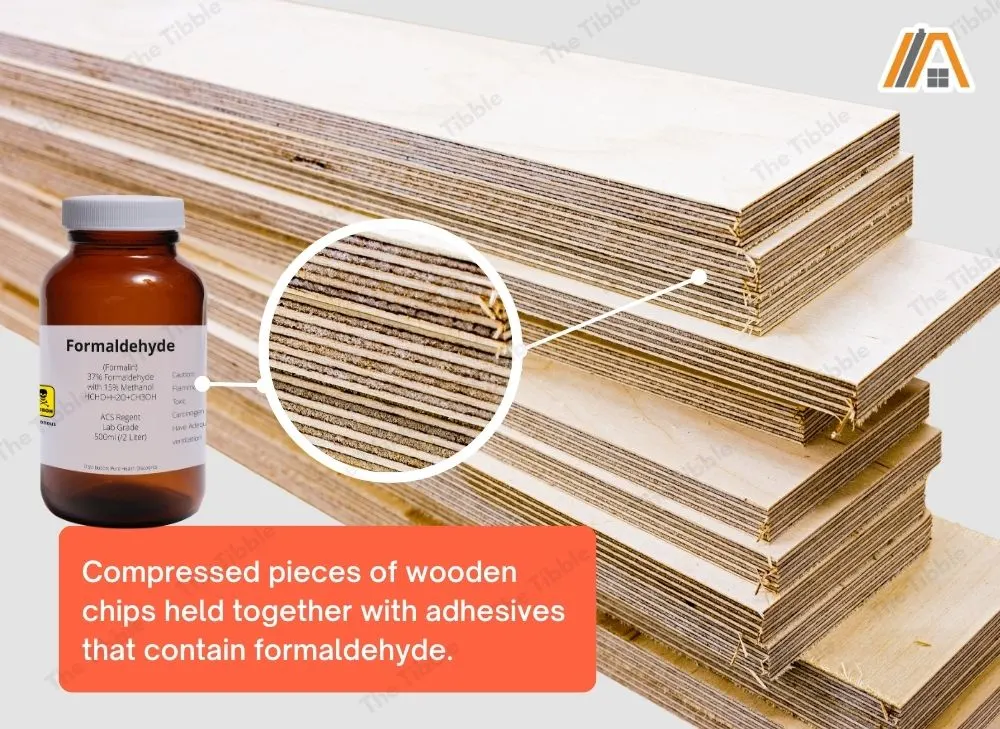
Formaldehyde is on California’s Prop 65 list of chemicals, so these items should come with a Prop 65 warning label.
Formaldehyde gas is colorless and flammable and has a pungent odor, which is especially present in cabinetry, laminate flooring, lacquers, and paints. Formaldehyde can also be used in some fabrics to reduce wrinkling and make it easy to care for.
You would not have the same pungent emissions with furniture that is made from solid wood as no adhesives would be needed to manufacture the wooden pieces.
Although it may be more expensive, you lower the chances of exposing yourself and your family to formaldehyde when you opt for these products, so that’s something to consider.
Is Formaldehyde Dangerous?
Formaldehyde gas is not something you want to be breathing in often or for long periods of time, but it is not instantly fatal or it would be completely banned from being used in consumer products.
Formaldehyde has been found to be a carcinogenic substance (cancer-causing agent) in persons exposed to high levels, and it can cause irritation of your skin, eyes, and throat with low-level exposure.

However, not everyone reacts the same way when exposed. Individuals who are very young or very old or who are susceptible to breathing problems are more sensitive to the exposure.
The Agency for Toxic Substances and Disease Registry provides more information about the health effects of formaldehyde as well as other toxic substances that you can be exposed to throughout your lifetime.
What Does IKEA Say About the Formaldehyde?
IKEA is a large company with huge social responsibility. They are aware of the use of formaldehyde in their products and have taken the necessary steps to ensure the well-being of their valued customers in regards to this chemical.
They have forbidden the use of formaldehyde in lacquers and paints. They have also reduced the amount of formaldehyde used in their furniture and run continuous tests on their materials and the final products.
They are also adamant about extending these tests to suppliers and ensuring all resources for their furniture are approved.
Smell Released by Outgassing
Formaldehyde is a VOC (Volatile Organic Compound) and becomes a gas at room temperature, which ultimately means that your furniture can undergo something called outgassing.
Outgassing (also known as off-gassing) is the process in which trapped, dissolved, or absorbed gas is released from a material. Formaldehyde is essentially absorbed and dissolved in the adhesive, and thus the wooden chips that make up IKEA furniture.
Let’s get our lab coats on for this one, shall we? Like many chemical reactions, heat is the catalyst, the main driver of the reaction.
The rate at which outgassing occurs increases as the temperature rises because the vapor pressure (measures the likelihood of a compound to change into a gaseous state) increases.
Because Formaldehyde is a VOC it already has a high vapor pressure, so it doesn’t take much for it to be released as a gas.
Outgassing is more common from temperatures staring at room temperature and above. So, if your space gets constant sunlight and is made up of almost entirely windows, the chances are that your space will be much warmer and outgassing will be worse.
Getting Rid of the Smell
The smell will disappear on its own as the off-gassing or out-gassing process proceeds. But off-gassing can actually take years, so you might want to try some tricks to get rid of it faster.
Put Furniture Outside in the Sun
Placing your furniture in the sun is a great option. The outgassed formaldehyde will have more space to disperse and will be diluted, making the air around your furniture less harmful.
Furthermore, the heat from the sun will speed up the outgassing process.
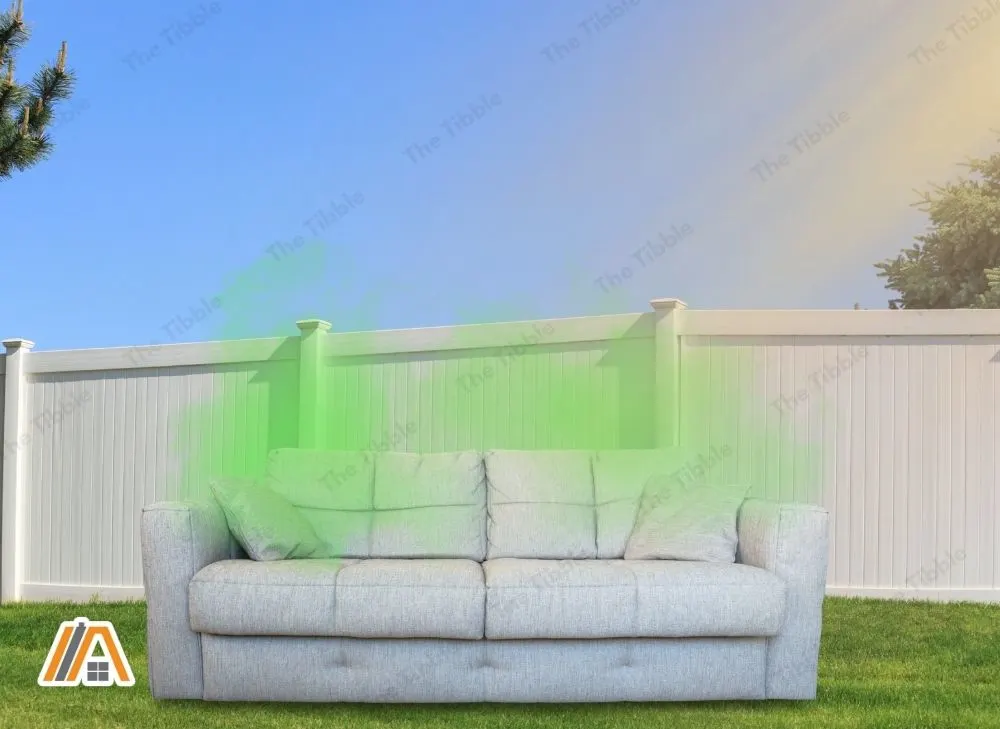
Placing furniture in the sun is, however, only effective, and practical for movable pieces of furniture like tables and wardrobes.
If the smell is coming from built-in cabinetry or cabinetry that has already been attached to the wall, then the next few ideas may be better suited.
Increase Ventilation in the Room
Start with the obvious one—opening windows and doors.
You can also set up some floor, box, pedestal, or desk fans—whatever you have available. These should be angled so that they increase the flow of air into and out of the room.
In addition to opening the windows, or if you are unable to open them, you should turn on the exhaust fans. This is only really effective if the furniture is in the room with the fan or is at least in an adjoining room with the connecting door open.
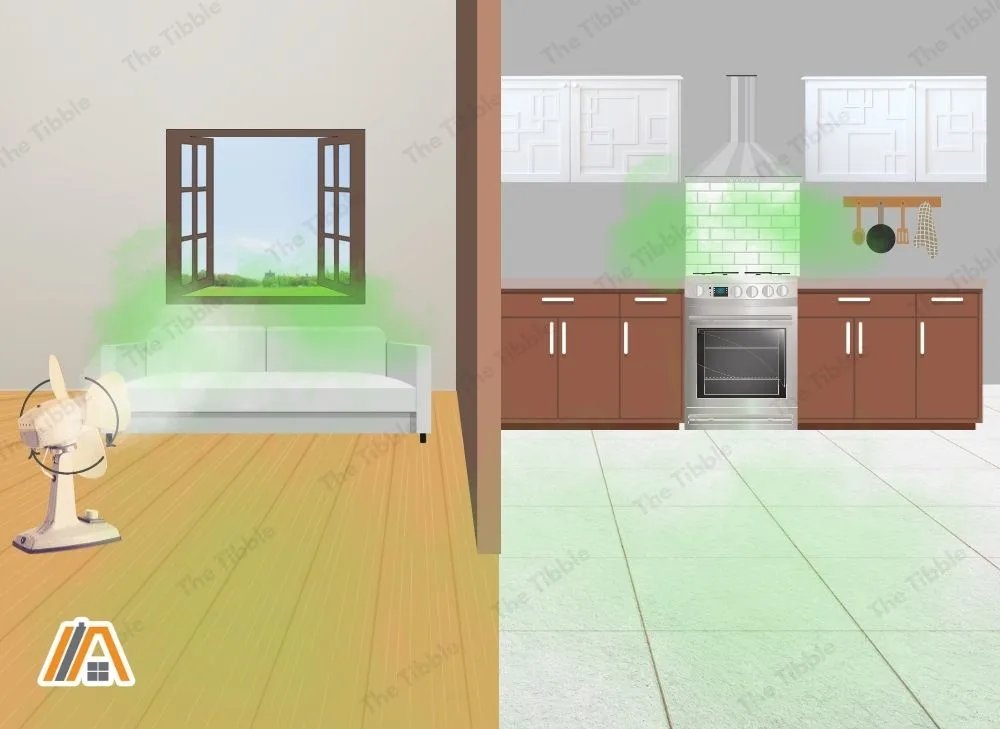
An alternative is to set up a temporary exhaust system using flexi duct and an inline fan.
Exhaust fans draw the formaldehyde-containing air from inside your space and expel it outside.
Apply Heat
Direct sunlight is obviously the best source of heat you can get, but it can also damage the item. If the furniture is white, it may turn yellow.
If placing the furniture in the sun is not an option (e.g., you live in a country where sunny days are scarce and/or rainy days are common) you can always take matters into your own hands. If you cannot control the conditions outside, then you can try to control the conditions inside.
Set up a well-ventilated room and attempt a “bake out” or “cookout” by closing all your windows and applying heat to your furniture. Not direct heat, though; a gas or electric heater or setting your AC at a higher temperature should do the trick.
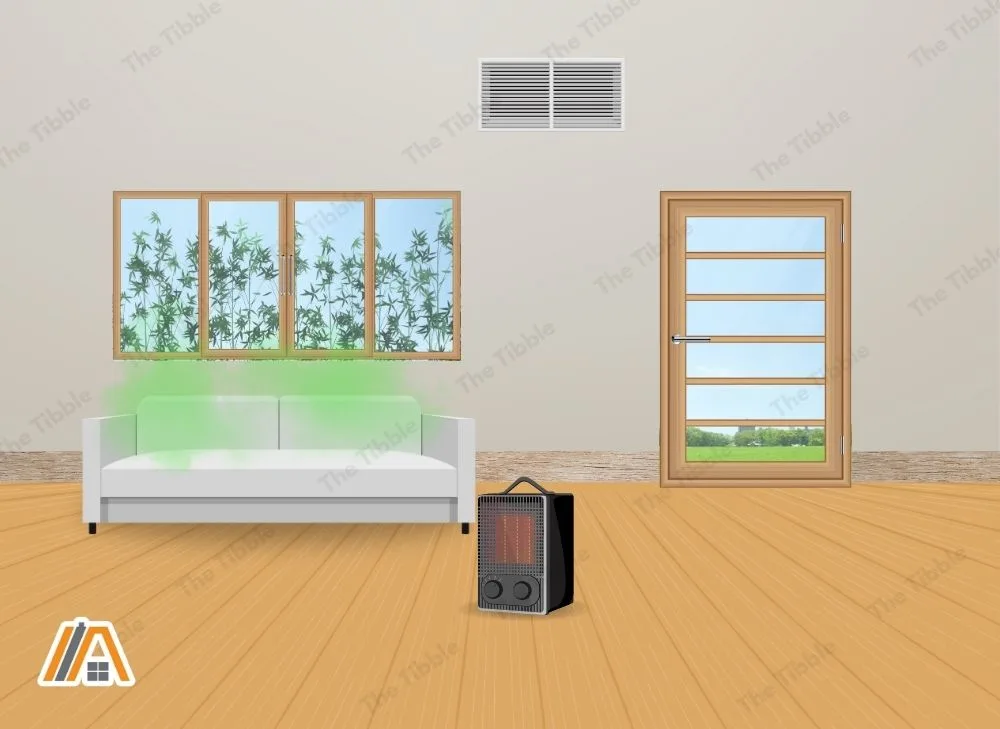
The aim of applying heat is to speed up outgassing.
Once you’ve let the room bake for a while, open up the external window and ventilate the room before going in.
Keep It Cool and Dry
Instead of looking to encourage outgassing, you can always look into preventing this process altogether by decreasing room temperature and increasing ventilation.
However, this is not the most sustainable option. If you leave a window open during summer, the warm air and humidity will instantly start the outgassing process.
This may be an option for countries that experience cold conditions most of the year.
Use Odor Absorbing Substances
Luckily, you won’t need any expensive or out-of-this-world products to help remove this odor. It’s as simple as heading to your kitchen cabinet for all the resources. However, I would use the options below in conjunction with the options mentioned above.
- Baking soda can be used on all furniture, just sprinkle it over the furniture and it will bind with the VOC.
- Charcoal and coffee grounds can be placed in a bowl on top or in the new furniture.
- Mix one part vinegar and one part water. Spray your furniture and wipe it down with a dry cloth.
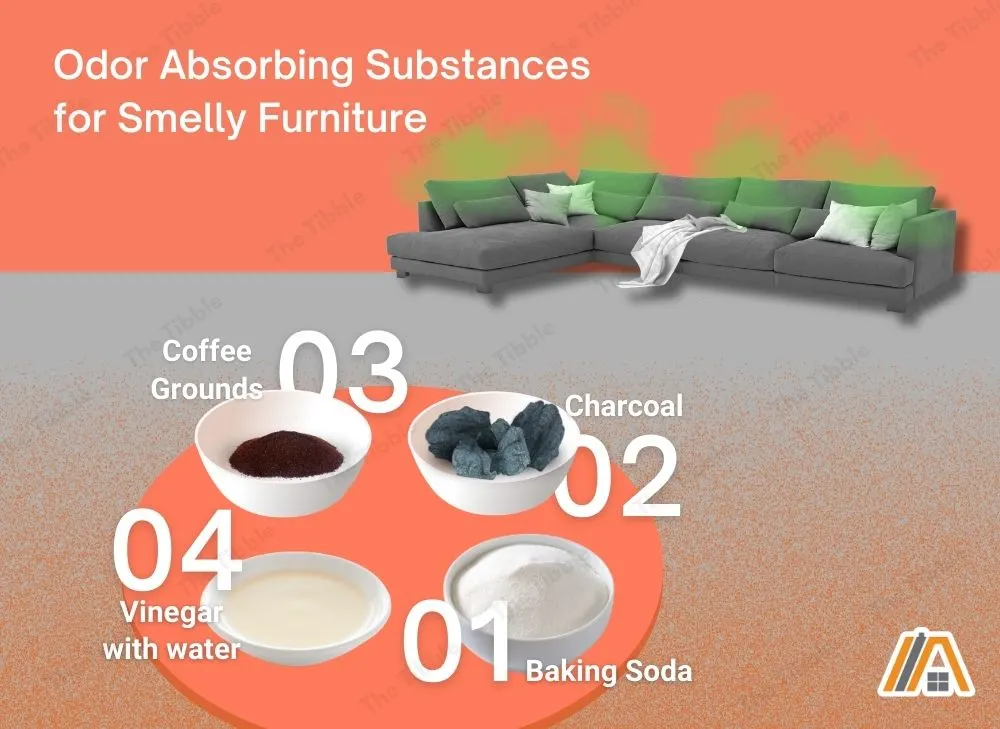
How Long Will It Take to Stop Smelling?
It is difficult to give an exact number of days, but it is estimated that the odor will “disappear” after a couple of days to a week. It all, of course, depends on the method used to get rid of the smell the size and number of new furniture pieces.
The smell may be gone after a few days but that doesn’t mean the outgassing process stops. Outgassing will continue for the next couple of years and there will still be small amounts of Formaldehyde in the air. It will be very small amounts that you won’t even be able to detect in the air when you breathe.
If you still cannot stand the smell, provided you have not damaged or altered the piece in your attempts to be rid of the smell, you should be able to return the piece assembled, even if you don’t have the original packaging anymore. However, you can only do so if it is within the 180-day allowable period.
Sources
https://www.quora.com/For-how-long-does-formaldehyde-off-gas-from-MDF-furniture
https://www.atsdr.cdc.gov/formaldehyde/home/index.html
https://en.wikipedia.org/wiki/Outgassing
https://enviroklenz.com/formaldehyde-removal-from-furniture/
https://www.britannica.com/science/vapor-pressure
https://www.epa.gov/indoor-air-quality-iaq/what-are-volatile-organic-compounds-vocs
https://findanyanswer.com/how-long-does-formaldehyde-last-in-furniture
https://www.youtube.com/watch?v=mhlZj3I185I
https://support.newgatesimms.com/vacuum-stability-and-outgassing-test-astm-e-595/
https://homeguides.sfgate.com/remove-chemical-odor-new-furniture-102461.html
https://woollygreen.com/remove-odor-from-new-wood-furniture/
https://www.ikea.com/us/en/files/pdf/e1/12/e11228df/ikea_faq_formaldehyde.pdf
https://cen.acs.org/articles/88/i36/Formaldehyde-Clothing.html
